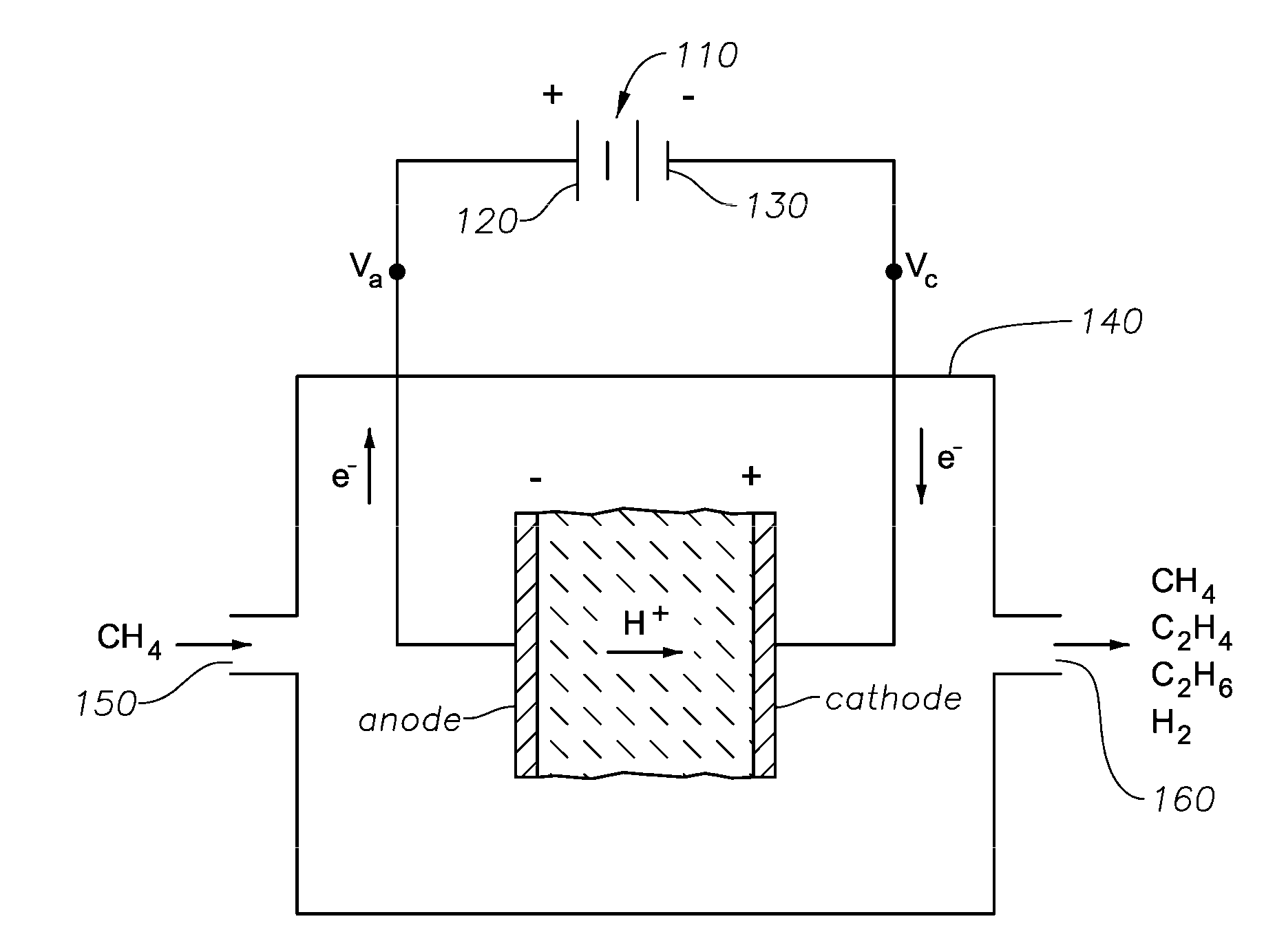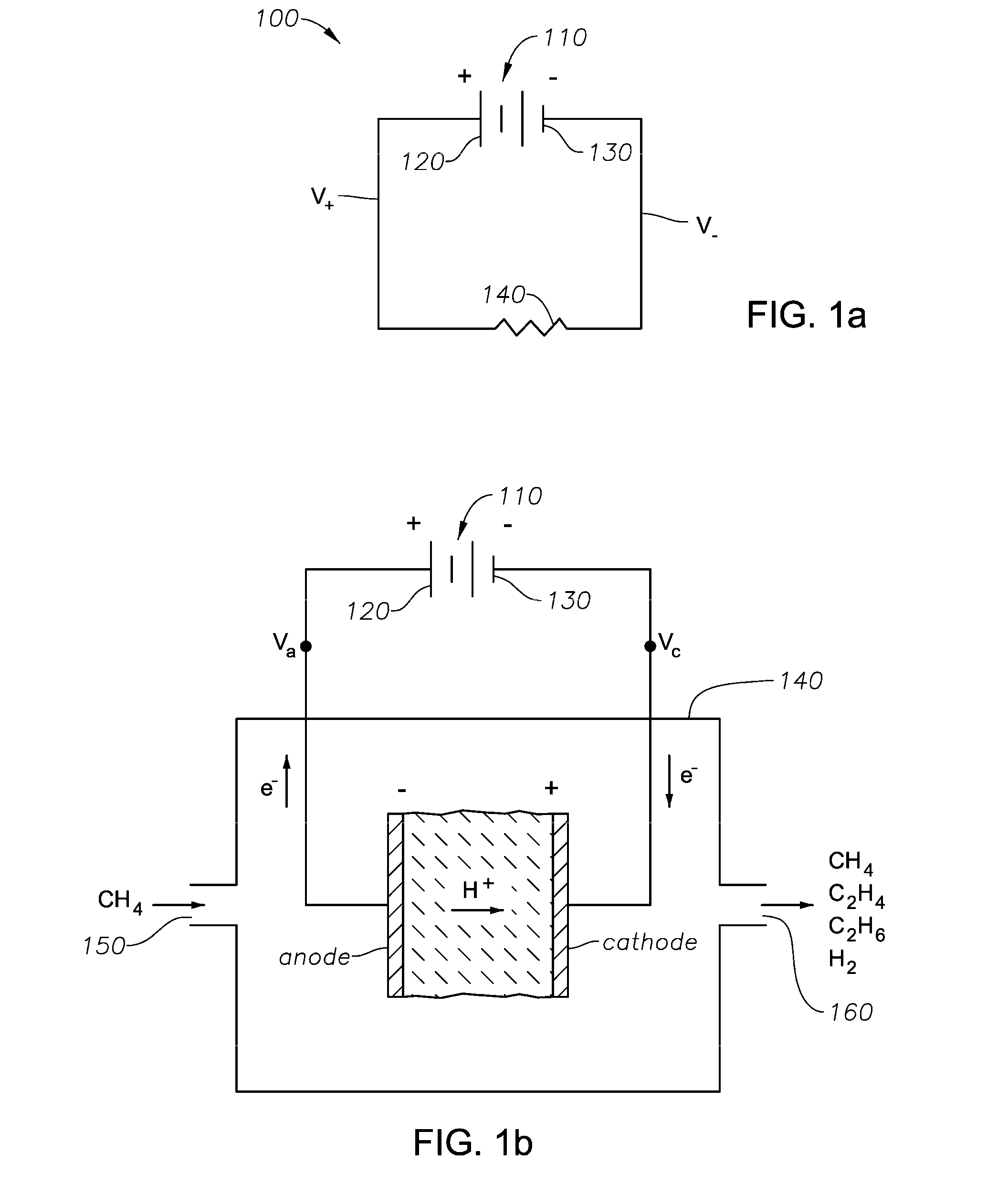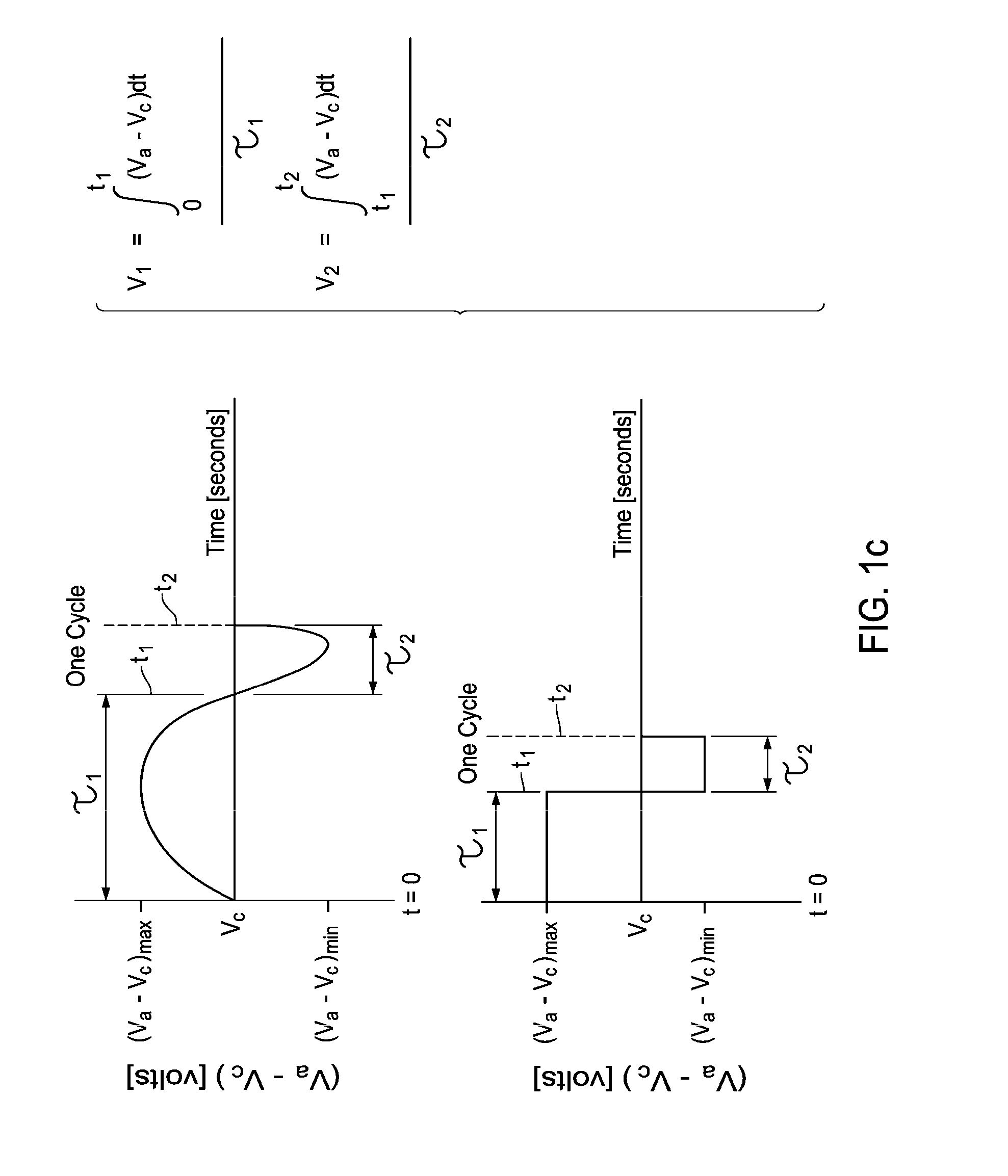Electrochemical Conversion of Hydrocarbons
a technology of hydrocarbons and hydrocarbons, which is applied in the direction of electrolytic organic production, separation processes, and preparation by hydroxy group addition, can solve the problems of undesirable carbon formation on the electrode, and achieve the effect of reducing the formation of carbon or reducing the formation of carbon
- Summary
- Abstract
- Description
- Claims
- Application Information
AI Technical Summary
Benefits of technology
Problems solved by technology
Method used
Image
Examples
Embodiment Construction
[0024]It has been observed that the successive oxidation of C1+ hydrocarbon (such as methane) to carbon at an electrochemical cell's electrode, typically the anode, results from establishing an electrochemical potential V1 across the cell for a time ≧τc. Thus, it is observed that in the electrocatalytic conversion of hydrocarbon such as methane, when the cell is operated for a time, τmin, that is less than τc (e.g., τ≦0.1·τc, or τ≦0.01·τc), there is insufficient time to successively oxidize the methane to carbon (e.g., coke) on the cell's electrode. Consequently, if the electric potential difference between the positive and negative electrodes of the cell is decreased, reversed in polarity, or even made substantially equal to zero, C2+ unsaturates such as ethylene can preferentially form in the cell's electrode chamber from CH2 fragments. Since at least a portion of the CH2 fragments have been consumed, fewer of these fragments remain at the electrode for oxidation to CH, and therea...
PUM
| Property | Measurement | Unit |
|---|---|---|
| pressure | aaaaa | aaaaa |
| temperature | aaaaa | aaaaa |
| current density | aaaaa | aaaaa |
Abstract
Description
Claims
Application Information
 Login to View More
Login to View More - R&D
- Intellectual Property
- Life Sciences
- Materials
- Tech Scout
- Unparalleled Data Quality
- Higher Quality Content
- 60% Fewer Hallucinations
Browse by: Latest US Patents, China's latest patents, Technical Efficacy Thesaurus, Application Domain, Technology Topic, Popular Technical Reports.
© 2025 PatSnap. All rights reserved.Legal|Privacy policy|Modern Slavery Act Transparency Statement|Sitemap|About US| Contact US: help@patsnap.com



